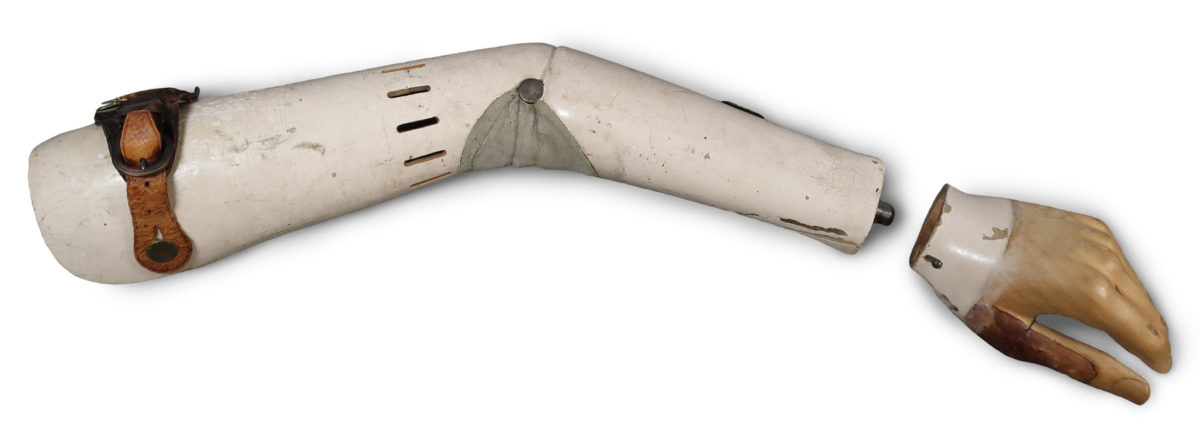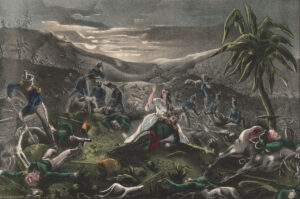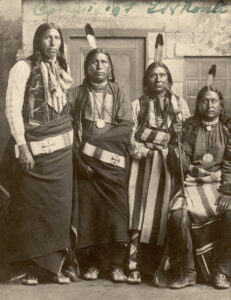Marvin Lincoln, an abolitionist from Massachusetts, was an organizer of the Massachusetts Anti-Man Hunting League and an agent of the Underground Railroad. In 1844, Lincoln began working as a carpenter with the famous prosthetic leg designer Benjamin Franklin Palmer. Too old to fight by the time of the Civil War, Lincoln instead used his skills to invent this prosthetic arm to help disabled veterans. His artificial arm featured, among other innovations, a detachable hand with a spring thumb that could grasp objects and an interior mechanism that allowed a jointed elbow to lock in place for easier lifting and clutching. “My aim has been to so construct an arm as to give increased holding and grasping powers, while it is much more simple and less expensive than those now in use,” he wrote in his patent application for the arm, which was quickly approved on August 11, 1863.
“I am again at home—an artificial Lincoln arm is doing what it can to supply the place of my right arm—it is somewhat awkward, and tho’ it is the mate of the remaining arm, yet it seems to be destitute of a ‘fellow feeling’—I chide it not,” wrote Private Henry W. Palmer, a veteran of the 31st Maine Infantry.
The Lincoln Arm remained a preferred prosthetic limb well into World War I. Pictured here is one of three versions that have been restored through funding by donors and members of the National Museum of Civil War Medicine in Frederick, Md. It is displayed on the first floor of the museum.






